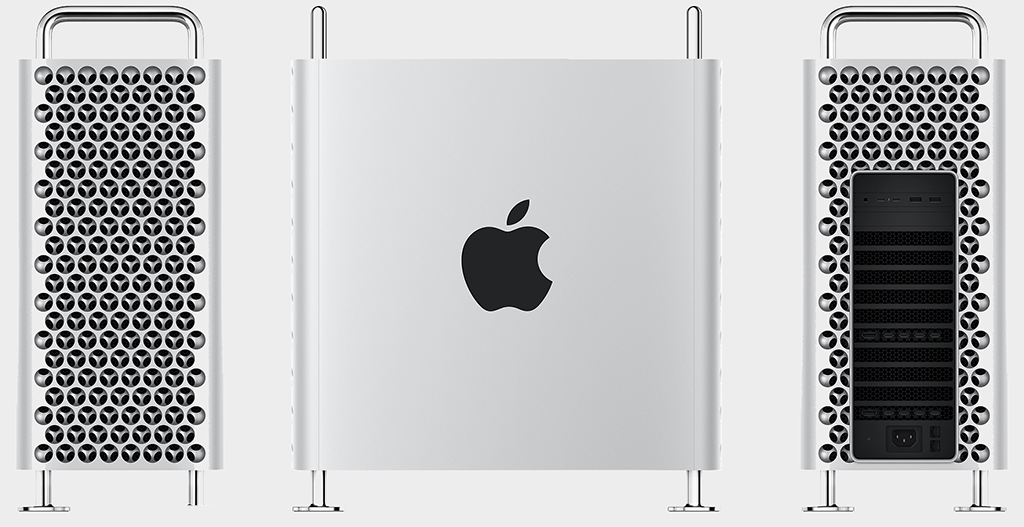How to get updates for macOS Mojave or later
Apple MNYF2LL/A 12' MacBook Laptop - Space Gray (Retina Display, 1.2GHz Intel Core m3 Dual Core Processor, 8GB RAM, 256GB, Intel HD Graphics, Mac OS (2017 Newest Version) (Renewed) 4.5 out of 5 stars 103. Apple - 27' iMac® with Retina 5K display (Latest Model) - Intel Core i5 (3.1GHz) - 8GB. Mac Pro is designed for pros who need to build high‑bandwidth capabilities into their systems. With four double‑wide slots, three single‑wide slots, and one half‑length slot preconfigured with the Apple I/O card, it has twice as many slots as the previous Mac tower. The new Mac Pro starts at $5,999 for the 8-core model with 32 GB of RAM and a 256-GB solid-state drive. That can be configured up to a 28-core model with 1.5 terabytes of RAM. Dec 10, 2019.
If you've upgraded to macOS Mojave or later, follow these steps to keep it up to date:
- Choose System Preferences from the Apple menu , then click Software Update to check for updates.
- If any updates are available, click the Update Now button to install them. Or click ”More info” to see details about each update and select specific updates to install.
- When Software Update says that your Mac is up to date, the installed version of macOS and all of its apps are also up to date. That includes Safari, iTunes, Books, Messages, Mail, Calendar, Photos, and FaceTime.
To find updates for iMovie, Garageband, Pages, Numbers, Keynote, and other apps that were downloaded separately from the App Store, open the App Store on your Mac, then click the Updates tab.
To automatically install macOS updates in the future, including apps that were downloaded separately from the App Store, select ”Automatically keep my Mac up to date.” Your Mac will notify you when updates require it to restart, so you can always choose to install those later.
/cdn.vox-cdn.com/uploads/chorus_image/image/60346761/mbp15touch_space_gallery2_201807_GEO_US.0.jpeg)
How to get updates for earlier macOS versions
If you're using an earlier macOS, such as macOS High Sierra, Sierra, El Capitan, or earlier,* follow these steps to keep it up to date:
- Open the App Store app on your Mac.
- Click Updates in the App Store toolbar.
- Use the Update buttons to download and install any updates listed.
- When the App Store shows no more updates, the installed version of macOS and all of its apps are up to date. That includes Safari, iTunes, iBooks, Messages, Mail, Calendar, Photos, and FaceTime. Later versions may be available by upgrading your macOS.
To automatically download updates in the future, choose Apple menu > System Preferences, click App Store, then select ”Download newly available updates in the background.” Your Mac will notify you when updates are ready to install.
* If you're using OS X Lion or Snow Leopard, get OS X updates by choosing Apple menu > Software Update.
How to get updates for iOS
New Apple Mac Pro 2019
Learn how to update your iPhone, iPad, or iPod touch to the latest version of iOS.
Learn more
New Apple Macbook
- Learn how to upgrade to the latest version of macOS.
- Find out which macOS your Mac is using.
- You can redownload apps that you previously downloaded from the App Store.
- Your Mac doesn't automatically download large updates when it's using a Personal Hotspot.
Back up your Mac
And your memories. A few simple steps can save you from losing your favorite photos and files.
Learn how to back up your MacNew Apple Mac Pc Game
Mac service and repair
Learn about AppleCare+ and the Apple limited warranty coverage, start a service request for your Mac, and find out how to prepare your Mac for service.
New Apple Mac Pc Free
 Learn more about repairs
Learn more about repairsGet AppleCare+ for Mac
With AppleCare+, you’re covered. Get accidental damage coverage and 24/7 priority access to Apple experts.
Have a question? Ask everyone.
The members of our Apple Support Community can help answer your question. Or, if someone’s already asked, you can search for the best answer
Ask now/cdn.vox-cdn.com/uploads/chorus_asset/file/16317417/wwdc2019DSC_4114.jpg)
Tell us how we can help
New Apple Mac Pc Download
Answer a few questions and we'll help you find a solution.
Get supportApple Service Programs

